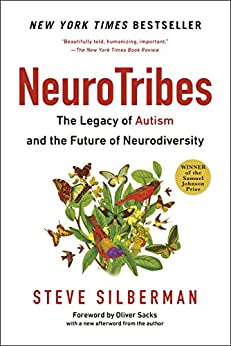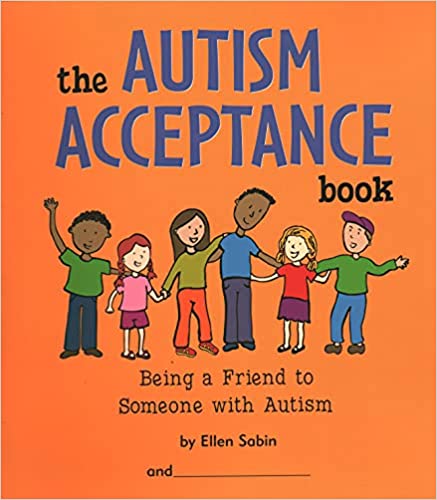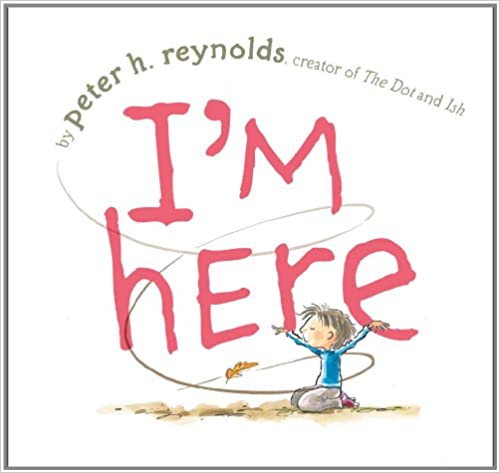Understanding Autism
Everybody on the planet has a different brain, and that’s okay.
Amethyst Schaber: Ask an Autistic – What is Neurodiversity?
A diagnosis of autism comes when a child’s behaviour is described by a checklist in the Diagnostic and Statistical Manual of Mental Disorders published by the American Psychiatric Association.
However, once that diagnosis is in place, you might say that autism is a different way of processing information. In her book, “You’re Going to Love This Kid!” Paula Kluth puts those differences into a set of useful categories. Each person with autism is affected in different ways and to different degrees in each category (and there are probably others that we don’t yet recognize). But this list of differences is a starting point for knowing how to help an individual feel comfortable, supported and understood.
Sensory Differences
In a nutshell, having sensory differences means that people either need and seek more input, or else find sensory information overwhelming. This can be different not just from person to person, but also from sense to sense within the same person. Someone might also like a certain kind of visual input, for example, but be overwhelmed by another. It’s complicated! But as you get to know someone, you will become familiar with their reactions to sensory input.
On the plus side, autistic people can be very attuned to sensory detail, and observe or engage in ways that others probably can’t enjoy to the same degree. For example, this trait makes some autistic people especially skilled in areas such as scientific observation, electronics, animal care, drawing or music.
By the way, we all learned about five senses, but actually there are three more. This article explains how differences in sensory processing can lead to differences in behaviour.
- proprioception – sensing where the parts of your body are
- vestibular – sensing your body’s orientation in space
- interoception – sensing the internal state of your body
This video does a great job explaining sensory differences.
Movement Differences
| More and more research is finding that people with autism have differences in motor planning – the process of planning and coordinating physical movements. This is important because these differences may seem to come and go, depending on the situation and how a person feels on a given day. These changes from day to day may be misunderstood, but it is important to know that there are times when behaviour is NOT intentional. You might notice: |
- excessive and atypical movement,
- lack of typical movement
- uneven gait
- repetitive movements
- unintentional speech
- gaze avoidance
These differences do NOT mean that autistic people have physical limitations – just that they might need time and patience to change what they are doing, or to learn a new skill. It also means that if something isn’t working right now, it might be fine to try again later. But it is not fair, kind or helpful to force people to do what isn’t comfortable for them – making eye contact, for example.
Communication Differences
Autistic children and adults with autism may not speak at all, may use verbal language with a lot of repetition (echolalia), or may be fluent speakers with some difficulty understanding nuances of language (sarcasm, metaphors, subtlety, etc). Even verbally expressive people may have difficulty communicating their needs, wants, or preferences.
Even if a child with autism uses words, it’s not uncommon for them to have problems with the nonverbal parts of communicating. We use nonverbal communication to understand wants and desires, recognize emotions, and get a sense of how others feel about us.
If a child seems withdrawn or unresponsive, it isn’t because they don’t want to connect with others. They just don’t know how, and communicating in the way others expect may not feel natural to them. At this stage, children might do things like:
- start an interaction and then fail to continue,
- show they don’t know what they wanted to say,
- use echolalia (repeating memorized words or sentences) as a way to interact. They might want you to repeat words back to them.
- suddenly stop communicating or wander away.
- communicate to get needs met, but not share experiences
If these things happen, it just means they are working right on the edge of what they are capable of right now. Give them some support, and explore ways of communicating that work for them. They will continue to grow.
Thinking and Learning Differences
Children with autism can be very focused. Certain ideas or interests will be very important to them, and may take up a lot of their time. You may notice it is very hard for a child to shift from these interests to other topics. This can be a positive trait – sometimes intense interests can lead to social connection, rewarding hobbies, and future employment.
Academic learning can take different approaches as well. A percentage of children with autism are hyperlexic – they learn letters and can decode words at an early age with a lot of proficiency, but reading comprehension may lag behind. Others with autism may find it difficult to learn to read at all. Intelligence may be expressed through other avenues – music, mathematics, or drawing are frequent examples. It’s important to look for a child’s strengths and offer them opportunities to expand those abilities, as well as working to support their challenging areas.
Make sure you check out the “For Educators” tab on this website for ideas to support learning.
Social Differences
Children with autism often initiate and respond to interactions in ways others do not expect. It’s important to recognize that the desire for connection and love and belonging is the same as it is for all people.
Say hello. Smile. Wave. Comment on the things you see people are interested in. Congratulate successes or recognize happy moments. Offer comfort and see if it is actually comforting – and if it isn’t, try another way. Communication and connection grows out of time spent together, just as it does for anyone else. The difference may just be that you need to use fewer words and respect sensory differences.
You may also need to help children with autism understand boundaries, as they can have trouble reading nonverbal cues or understanding expected and unexpected behaviours in different situations. But everyone can learn! Social stories and explicit teaching can be very helpful as strategies for children with autism to understand their social world.
Two related resources:
- Website: The Art of Autism.
- Understanding the Spectrum: A Printable Comic Strip by Rebecca Burgess
This is a great resource for helping older kids and adults understand individual differences and support needs. You can print it in English, French, Spanish, or German.
Book Recommendations for Adults:
Prizant, Barry. Uniquely Human: A Different Way of Seeing Autism
A look at how characteristics of autism that may puzzle us really show us that everyone has the same feelings and needs, and that people respond to the world in ways that make sense, when we understand their perspective (review here.)
Alderson, Jonathan. Challenging the Myths of Autism.
There are many misunderstandings about autism, and Jonathan Alderson works through ten of them. Bottom line: kids with autism grow and learn, as any child does. As in the Prizant book, there is helpful advice for parents here.
Silberman, Steve. Neurotribes.
For history buffs, this book provides an understanding of where the diagnosis of autism comes from, how people with autism have always contributed to our society, and how perceptions of autism have changed over time.
Biklen, Douglas. Autism and the Myth of the Person Alone
The heart of the book consists of chapters by people with autism themselves, either in an interview format with the author or written by themselves. Each author communicates either by typing or by a combination of speech and typing. The author’s role is to collect the interviews and provide context, along with some very thought-provoking commentary.
Kluth, Paula. “You’re Going to Love This KId!”
Written for educators, this is also a really good introduction to autism for anyone living or working with kids with ASD. There is a lengthy section describing what autism can mean in a person-centered approach to the topic, as well as specific suggestions on helping autistic kids thrive where they are.
Understanding the Autistic Mind 1; A Guide To Understanding, Developing, And Applying Reasonable Accommodations For Autistic People
This guide summarizes what hundreds of autistic people around the world (speakers and non-speakers) have discovered about the atypical way their minds work, the difficulties they face daily, and how we all can develop and provide reasonable accommodations for autistic people to cope and to thrive.
Two of the best sources of information are people with autism, and families of people with autism. There really is no substitute for life experience. There are now many books written by autistic people telling their stories – here are a few. We’ve listed examples of both in the sidebar of this website.
Colson, Emily. Dancing with Max.
This is a parent memoir. The author doesn’t hold back on the challenges, but she always spotlights the joy that her son brings into the world around him because of who he is. She also writes about some interesting communication strategies that she and her son developed together. This book is a great reminder that the world is a better place because it has all kinds of people. For updates and a source of encouragement, you can follow Emily Colson on Facebook.
Higashida, Naoki. The Reason I Jump.
Naoki Higashida was only a middle-schooler when he began to write The Reason I Jump. Autistic and with very low verbal fluency, Naoki used an alphabet grid to painstakingly spell out his answers to the questions he imagines others most often wonder about him: why do you talk so loud? Is it true you hate being touched? Would you like to be normal? The result is an inspiring, attitude-transforming book.
Kedar, Ido. Ido in Autismland
Ido Kedar, a brilliant sixteen year old with autism, challenges what he believes are misconceptions in many theories that dominate autism treatment today while he simultaneously describes his personal growth in his struggles to overcome his limitations.
Shore, Stephen. Beyond the Wall: Personal Experiences with Autism and Asperger Syndrome.
Stephen Shore is an educator, musician, and researcher as well as a writer. He relates his personal and professional experiences in a simple and open manner, creating an informative, user-friendly text that sheds new light on the trials and tribulations of those with Asperger Syndrome.
Schellenberg, Angeline. Tell Them It Was Mozart.
This is a collection of poems by a Winnipeg author – unique because rather than sharing a narrative, poems encapsulate important moments and emotions in the life of this family. Many will relate to what they find here.
Falk, Kalyn. Mother of the Year and Other Elusive Awards
Kalyn Falk is also a Winnipeg author. This well-written and honest book is an engaging memoir about hope and joy despite the challenges of parenting her child.
Book Recommendations for Kids:
Sometimes we need a book to explain to all children what autism is, and to remind them that even when people seem different, they aren’t as different as we think. These books are for building understanding and empathy.
Sabin, Ellen. The Autism Acceptance Book (review here.)
This is actually a workbook. Each section considers an area of life in which children with autism may seem different, but are actually behaving in ways that work for them. It is a great introduction for children to the challenges faced by people with autism while also supporting their personal journey toward appreciating and respecting people’s differences.
Kluth, Paula and Patrick Schulz. Pedro’s Whale
Pedro, a young boy who loves whales more than anything, is heartbroken when he’s told to put away his favourite toy whale on the first day of school. But then Pedro’s teacher discovers the secret to helping him do his best work: not only giving him the whale, but also incorporating his special interest into the whole curriculum. Soon Pedro’s whale is helping all the children learn…
Reynolds, Peter. I’m Here
This short, poignant book is a good choice as a discussion starter, either with individual children or small groups. It was written with an autistic child in mind, but is a reflection for everyone about loneliness and the potential for connection.
Parr, Todd. It’s Okay to Be Different.
Featuring Parr’s trademark bold colors and silly scenes, this book embraces differences in a unique style, delivering an important message of acceptance, understanding, and confidence in a child-friendly package.

















